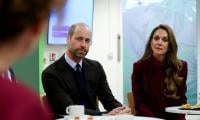For Ismailis, an unprecedented horror
Karachi Just as the night staff at the Memon hospital was preparing to leave, it heard that passengers of a bus had been shot dead.“We thought how many could there be … three or four at the most? But then the bus arrived and bodies just kept coming in one
By Tehmina Qureshi
May 14, 2015
Karachi
Just as the night staff at the Memon hospital was preparing to leave, it heard that passengers of a bus had been shot dead.
“We thought how many could there be … three or four at the most? But then the bus arrived and bodies just kept coming in one after the other,” said Ahmed* who works at the reception counter of the hospital’s emergency department.
All hell broke loose after that. Everyone, from senior doctors to the people working behind the desks, had blood stains on their hands as they were busy ferrying stretchers and bodies back and forth the bus and the casualty department.
The red smears on the floor just inside the entrance also revealed as much. Inside, towards the left, stretchers were strewn about with their sheets dishevelled in a large, beige hall.
“The attackers shot to kill. The bodies had single bullet marks at the back of their heads or at the base of their necks,” said Ahmed.
His co-worker, Imran*, said looking at the bodies brought to the hospital, it seemed that the assailants had begun shooting them from the seats at the back and moved towards the front, shooting the passengers one by one.
“A lot of them didn’t even see what was coming because many bodies that were brought here were in reclining position,” he added.
Ahmed remarked that he was still dumbfounded as to how the bus conductor had managed to drive the vehicle to the hospital after being shot.
As with everyone else, Ahmed and Imran too found it strange that the attackers managed to get on the bus in the first place.
They said the Ismailis were a closely-knit community and their transporters usually did not stop for anyone but the intended passengers.
Relating what they heard from the survivors and others amid the unprecedented chaos at the hospital, the attackers wanted to take the bus and the passengers along with them somewhere.
Ahmed said one of the men signalled the bus driver to stop after which four of the six attackers managed to get on board the vehicle.
“We heard that they wanted to take the bus and its passengers along with them somewhere. But the driver disagreed and began speeding at which he was immediately shot dead,” said Ahmed. “The men then began executing the passengers by shooting at the back of their heads and necks.”
As Ahmed and Imran began wrapping up their desks for the day, they remarked that this was for the first time that the hospital had catered to the victims of a terrorist attack. “Let’s hope that this is all that we have to see,” said Imran.
News Desk adds: The bodies of three victims of the attack, 20-year-old Sonia Sultan and her father-in-law and mother-in-law, were taken to the Aga Khan Hospital. Sonia’s mother, who too was on board the bus and suffered injuries, was admitted to the hospital. Sonia had married in December last year.
The body of Sunny Sultan Ali, an A-levels student who was gunned down by the attackers, was also shifted to the Aga Khan Hospital.
He was a student at the City School’s A-levels branch in Gulshan-e-Iqbal and was returning home in the bus after spending the night studying at a friend’s house.
* Names changed to protect privacy
Just as the night staff at the Memon hospital was preparing to leave, it heard that passengers of a bus had been shot dead.
“We thought how many could there be … three or four at the most? But then the bus arrived and bodies just kept coming in one after the other,” said Ahmed* who works at the reception counter of the hospital’s emergency department.
All hell broke loose after that. Everyone, from senior doctors to the people working behind the desks, had blood stains on their hands as they were busy ferrying stretchers and bodies back and forth the bus and the casualty department.
The red smears on the floor just inside the entrance also revealed as much. Inside, towards the left, stretchers were strewn about with their sheets dishevelled in a large, beige hall.
“The attackers shot to kill. The bodies had single bullet marks at the back of their heads or at the base of their necks,” said Ahmed.
His co-worker, Imran*, said looking at the bodies brought to the hospital, it seemed that the assailants had begun shooting them from the seats at the back and moved towards the front, shooting the passengers one by one.
“A lot of them didn’t even see what was coming because many bodies that were brought here were in reclining position,” he added.
Ahmed remarked that he was still dumbfounded as to how the bus conductor had managed to drive the vehicle to the hospital after being shot.
As with everyone else, Ahmed and Imran too found it strange that the attackers managed to get on the bus in the first place.
They said the Ismailis were a closely-knit community and their transporters usually did not stop for anyone but the intended passengers.
Relating what they heard from the survivors and others amid the unprecedented chaos at the hospital, the attackers wanted to take the bus and the passengers along with them somewhere.
Ahmed said one of the men signalled the bus driver to stop after which four of the six attackers managed to get on board the vehicle.
“We heard that they wanted to take the bus and its passengers along with them somewhere. But the driver disagreed and began speeding at which he was immediately shot dead,” said Ahmed. “The men then began executing the passengers by shooting at the back of their heads and necks.”
As Ahmed and Imran began wrapping up their desks for the day, they remarked that this was for the first time that the hospital had catered to the victims of a terrorist attack. “Let’s hope that this is all that we have to see,” said Imran.
News Desk adds: The bodies of three victims of the attack, 20-year-old Sonia Sultan and her father-in-law and mother-in-law, were taken to the Aga Khan Hospital. Sonia’s mother, who too was on board the bus and suffered injuries, was admitted to the hospital. Sonia had married in December last year.
The body of Sunny Sultan Ali, an A-levels student who was gunned down by the attackers, was also shifted to the Aga Khan Hospital.
He was a student at the City School’s A-levels branch in Gulshan-e-Iqbal and was returning home in the bus after spending the night studying at a friend’s house.
* Names changed to protect privacy
-
 Lucy Liu Was 'embarrassed' To Tell Costar THIS Truth
Lucy Liu Was 'embarrassed' To Tell Costar THIS Truth -
 T.K. Carter, 'Punky Brewster' Star, Dies At 69
T.K. Carter, 'Punky Brewster' Star, Dies At 69 -
 Idris Elba Opens Up About His Next Chapter Post Recent Honour
Idris Elba Opens Up About His Next Chapter Post Recent Honour -
 Paul Mescal Heaps Praise For Paul McCartney Like George Clooney
Paul Mescal Heaps Praise For Paul McCartney Like George Clooney -
 Zara And Mike Tindall Spotted With Harry And Meghan's Friends
Zara And Mike Tindall Spotted With Harry And Meghan's Friends -
 Gwyneth Paltrow Reveals Son Moses' Negative Reaction To 'Marty Supreme'
Gwyneth Paltrow Reveals Son Moses' Negative Reaction To 'Marty Supreme' -
 Paul Mescal Weighs In On Newly Found Singing Passion
Paul Mescal Weighs In On Newly Found Singing Passion -
 Teyana Taylor Reveals Who Really Controls Her Styling
Teyana Taylor Reveals Who Really Controls Her Styling -
 Nina Dobrev Follows Vintage Fashion Trend In Hollywood
Nina Dobrev Follows Vintage Fashion Trend In Hollywood -
 Gracie Abrams Explains Why Creative Environments Inspire Her
Gracie Abrams Explains Why Creative Environments Inspire Her -
 Chad Michael Murray Says Iconic Actress Became His 'aha' Moment
Chad Michael Murray Says Iconic Actress Became His 'aha' Moment -
 Robbie Williams Shares His Desperate-for-fame Daughter Teddy's Biggest Fear
Robbie Williams Shares His Desperate-for-fame Daughter Teddy's Biggest Fear -
 Greenland As Geopolitical Hotspot: Why Arctic Region Matters For US, China & Russia?
Greenland As Geopolitical Hotspot: Why Arctic Region Matters For US, China & Russia? -
 Director Reveals Pressure Behind 'The Night Manager' Season Two
Director Reveals Pressure Behind 'The Night Manager' Season Two -
 Ozzy Osbourne's Family Makes Shocking Confession After His Death
Ozzy Osbourne's Family Makes Shocking Confession After His Death -
 Uncomfortable Truths About Using Google Gemini
Uncomfortable Truths About Using Google Gemini



